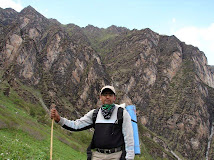The medicinal and aromatic plants of nepal are the important source of livelihood of poor people particularly residing in the remote highlands of Nepal. Important medicinal plants and Non Timber Forest Products (NTFP) of Nepal are also facing great challenges due to over exploitation and unmanaged harvesting practices. For example from my own experience working in highland of Dolpa on the natural and important bilogical resources like Caterpillar fungus (Cordyceps sinensis) which is also called Himalayan or Natural Viagra in the internationl market is also facing many risks. There are many important medicinal plants which are waiting for their sustainable managements.
This paper will be interesting to all medicinal plants lovers as the writer highlighted the scenario of overexploitation of medicinal plants in the international habitat.
THE health of millions could be at risk because medicinal plants used to make traditional remedies, including drugs to combat cancer and malaria, are being overexploited. "The loss of medicinal plant diversity is a quiet disaster," says Sara Oldfield, secretary general of the NGO Botanic Gardens Conservation International.
Most people worldwide, including 80 per cent of all Africans, rely on herbal medicines obtained mostly from wild plants. But some 15,000 of 50,000 medicinal species are under threat of extinction, according to a report this week from international conservation group Plantlife. Shortages have been reported in China, India, Kenya, Nepal, Tanzania and Uganda.
Commercial over-harvesting does the most harm, though pollution, competition from invasive species and habitat destruction all contribute. "Commercial collectors generally harvest medicinal plants with little care for sustainability," the Plantlife report says. "This can be partly through ignorance, but [happens] mainly because such collection is unorganised and competitive."
Medicinal trees at risk include the Himalayan yew (Taxus wallichiana), a source of the anti-cancer drug, paclitaxel; the pepper-bark tree (Warburgia), which yields an antimalarial; and the African cherry (Prunus africana), an extract from which is used to treat a prostate condition.
The solution, says the report's author, Alan Hamilton, is to provide local communities with incentives to protect these plants. Ten grass-roots projects studied by Plantlife in India, Pakistan, China, Nepal, Uganda and Kenya showed this approach can succeed. In Uganda, the project has ensured the sustainable supply of low-cost malaria treatments, and in China a community-run medicinal plant reserve has been created for the first time.
"Improving health, earning an income and maintaining cultural traditions are important in motivating people to conserve medicinal plants, and thus the habitats," says Hamilton. "In conservation you've got to go with what people are interested in."
Ghillean Prance, the former director of the Royal Botanic Gardens at Kew in London, agrees that medicinal plants are in dire need of protection. "Not nearly enough is being done," he told New Scientist. "We tend to destroy the very plants that are of most use to us."









No comments:
Post a Comment